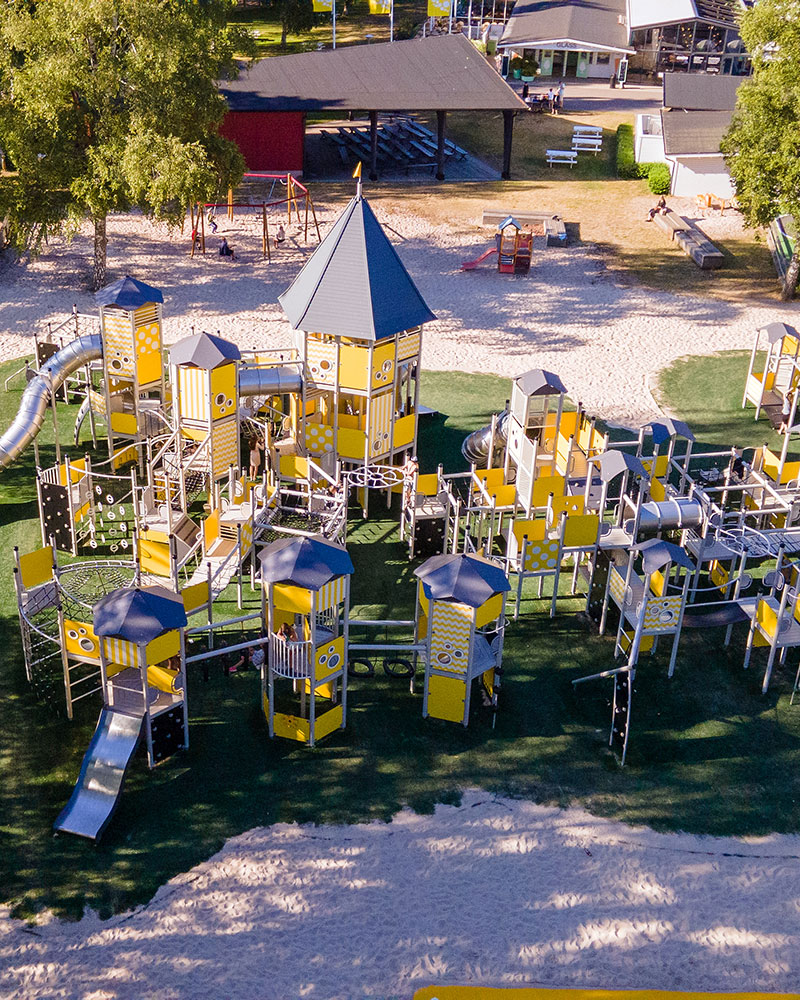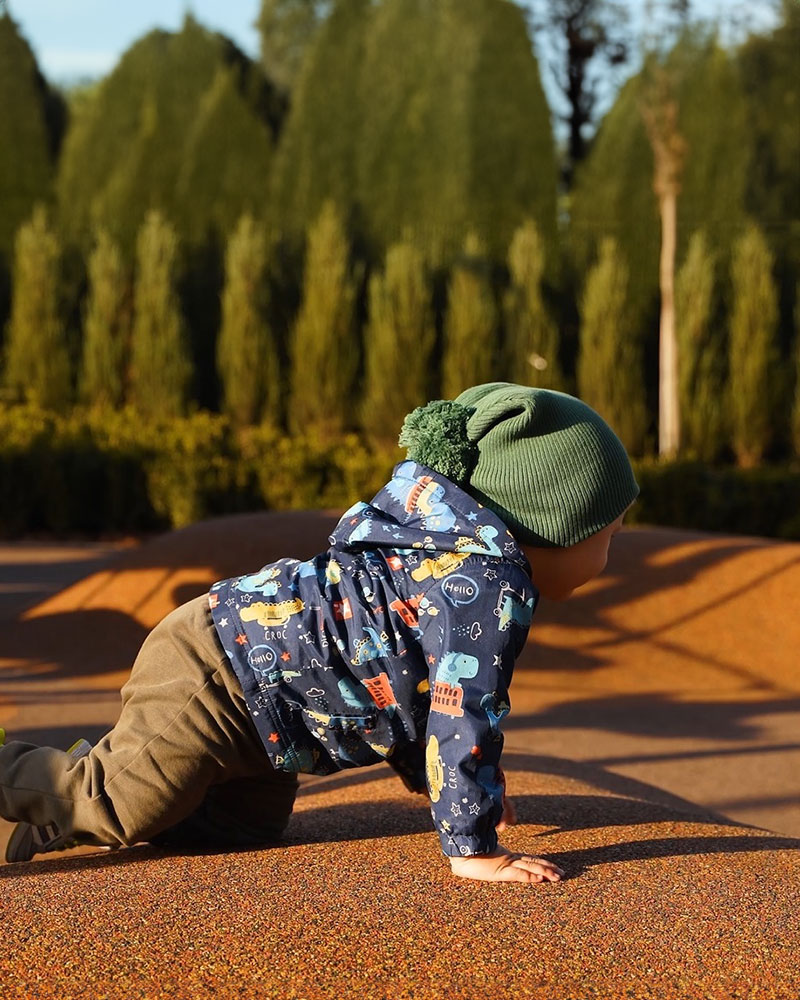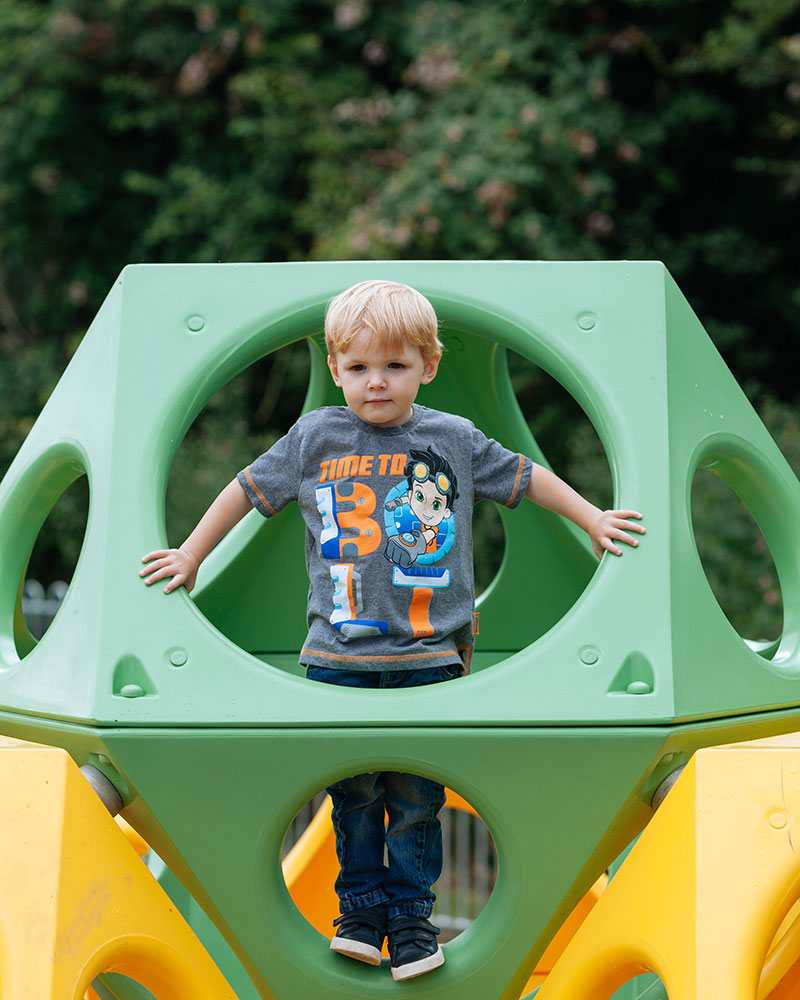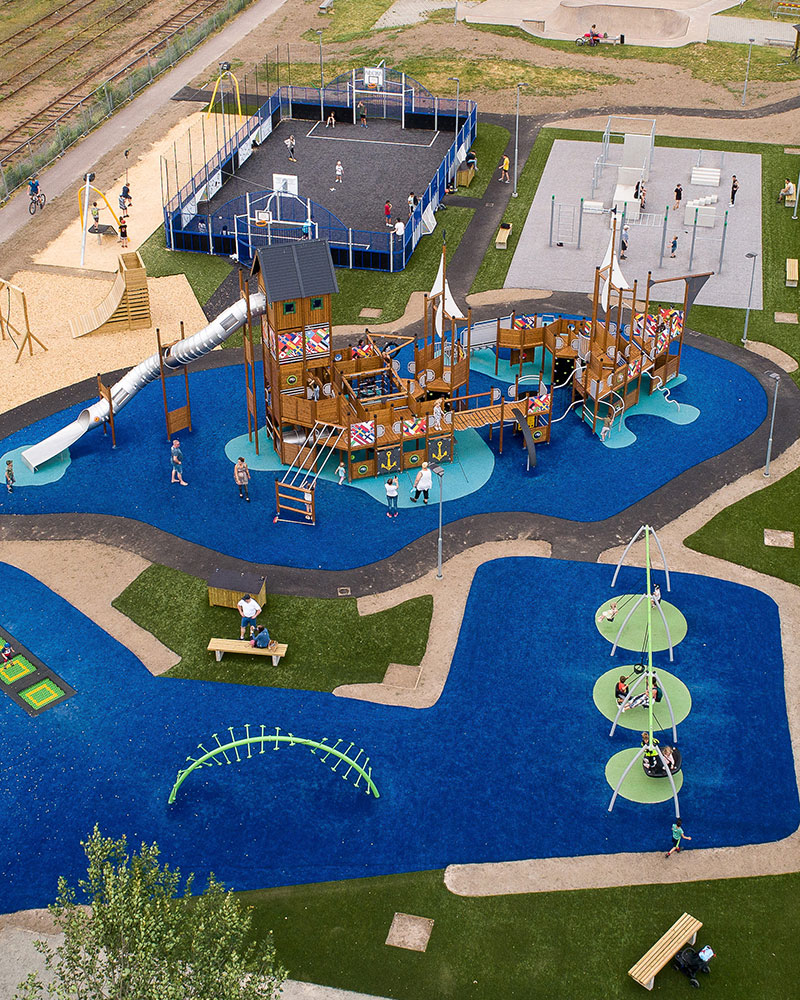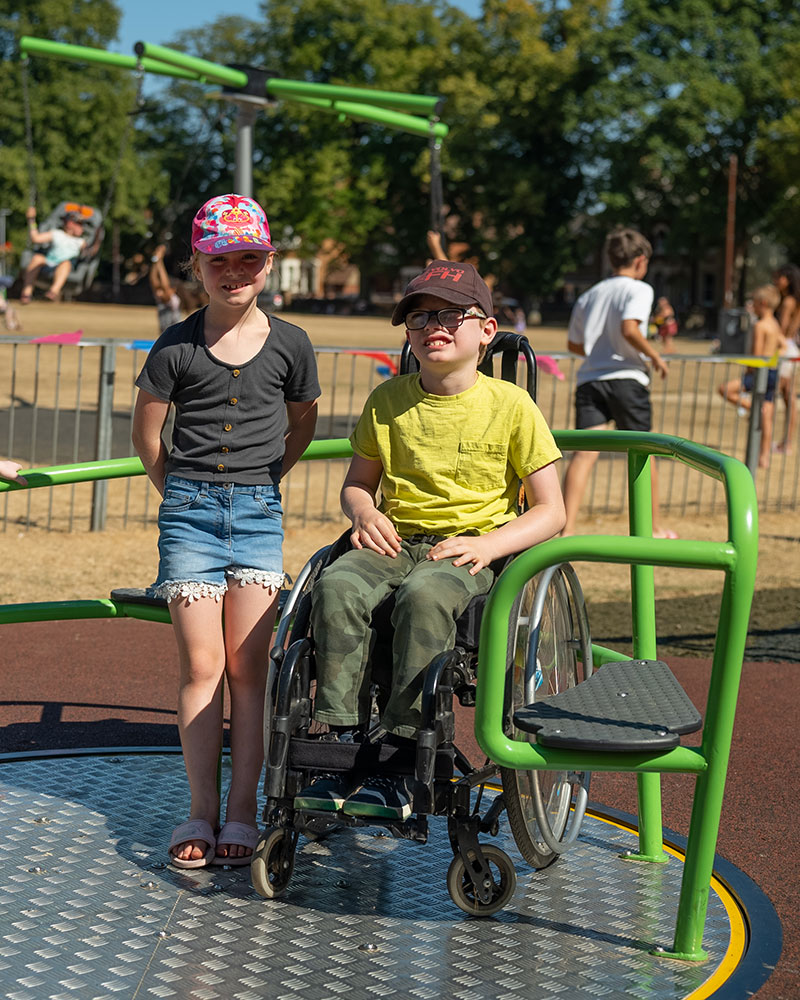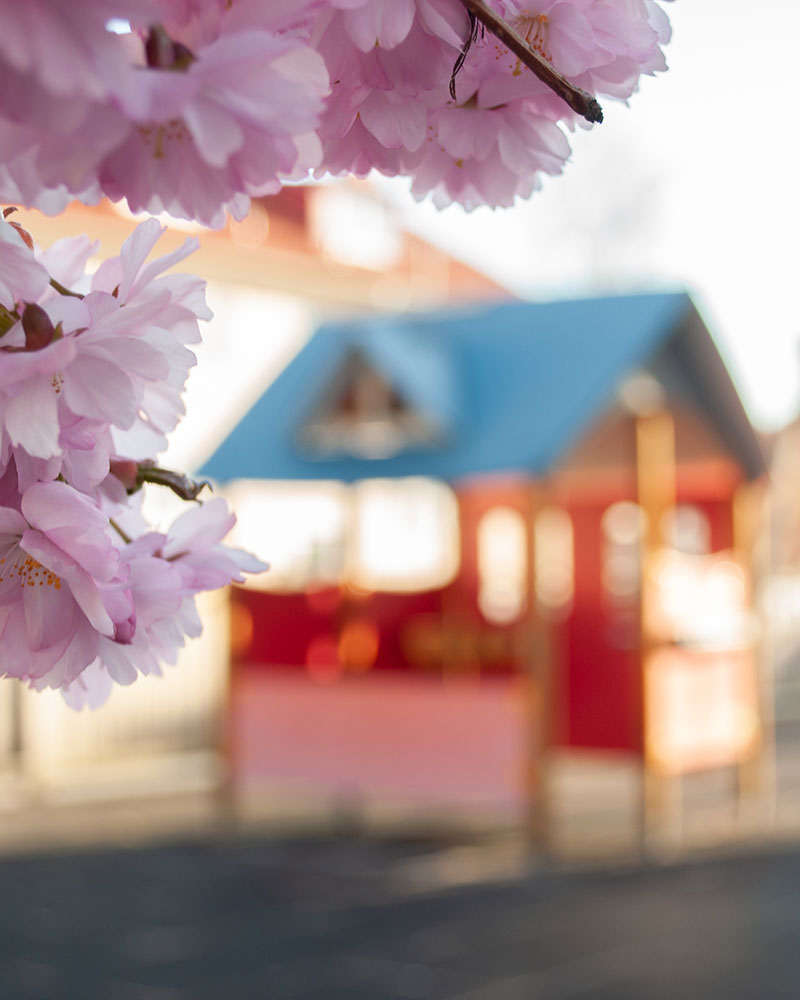Leitfaden für die Gestaltung integrativer Spielplätze
Dieser Leitfaden für die Gestaltung von Spielplätzen wurde in Zusammenarbeit mit Spielplatz- und Kinderentwicklungsexperten erstellt und soll dabei helfen, großartige Spielumgebungen im Freien für Kinder aller Altersgruppen und Fähigkeiten zu schaffen.
Alle zum gemeinsamen Spielen anregen
Unser Ziel ist es, integrative Spielplätze zu schaffen, auf denen alle gemeinsam spielen können. Diese Spielplätze sollten für Kinder aller Altersgruppen und Fähigkeiten zugänglich und ansprechend sein und die Interaktion und Sozialisierung fördern.
Spielen ist entscheidend für die Aktivität, das Lernen, den Aufbau von Freundschaften und die allgemeine Entwicklung und das Wohlbefinden von Kindern. Inklusive Spielräume fördern positive Beziehungen, bauen Stress ab, regen die Kreativität an, stärken das Selbstvertrauen und ermöglichen es Kindern, die Freude und die Vorteile des Spiels zu erleben.
Fünf Grundsätze für die Gestaltung eines integrativen Spielplatzes
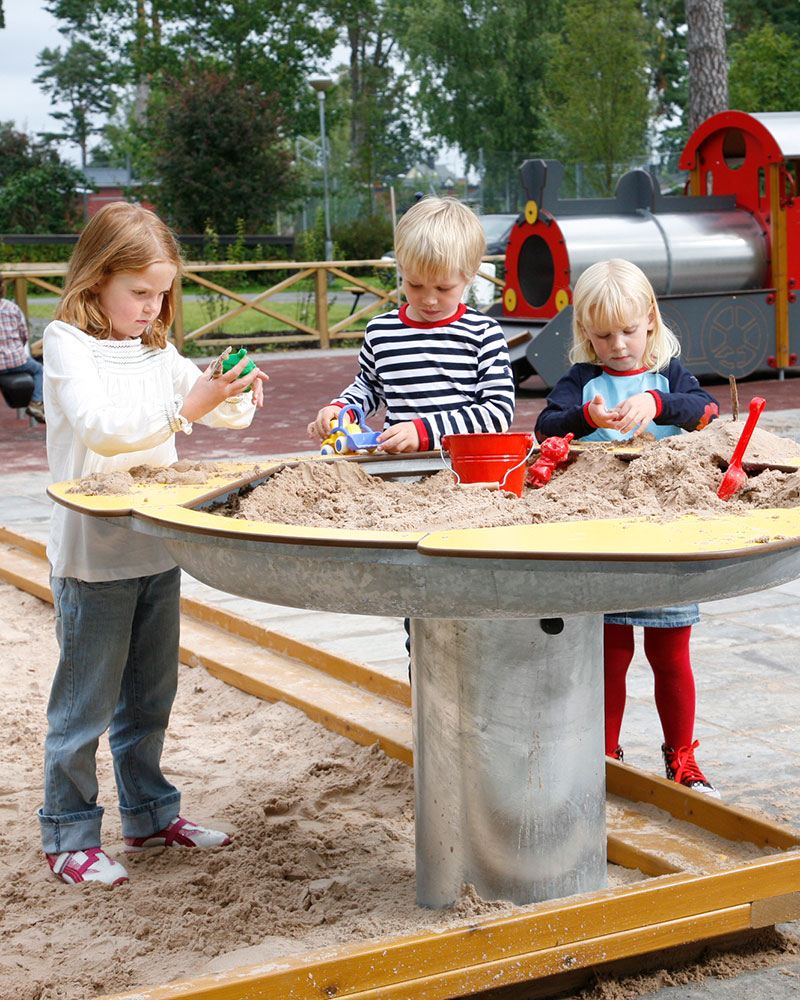
1. Multisensorische Elemente
Stellen Sie Geräte bereit, die die einzelnen Sinnessysteme stimulieren. Verwenden Sie für die auditive Verarbeitung Musikinstrumente und Sprechrohre. Propriozeptive Aktivitäten wie Kletterprodukte, Netze und Sprunggeräte fördern die Bewegung von Muskeln und Gelenken. Taktile Aktivitäten werden durch strukturierte Kletterfelsen, Sandspiele und Spieltafeln gefördert. Die vestibuläre Entwicklung wird durch Kreisel, Schaukeln und Balancieraktivitäten gefördert. Die visuelle Wahrnehmung wird durch bunte Spieltafeln, kontrastreiche Farben und Teleskope gefördert.
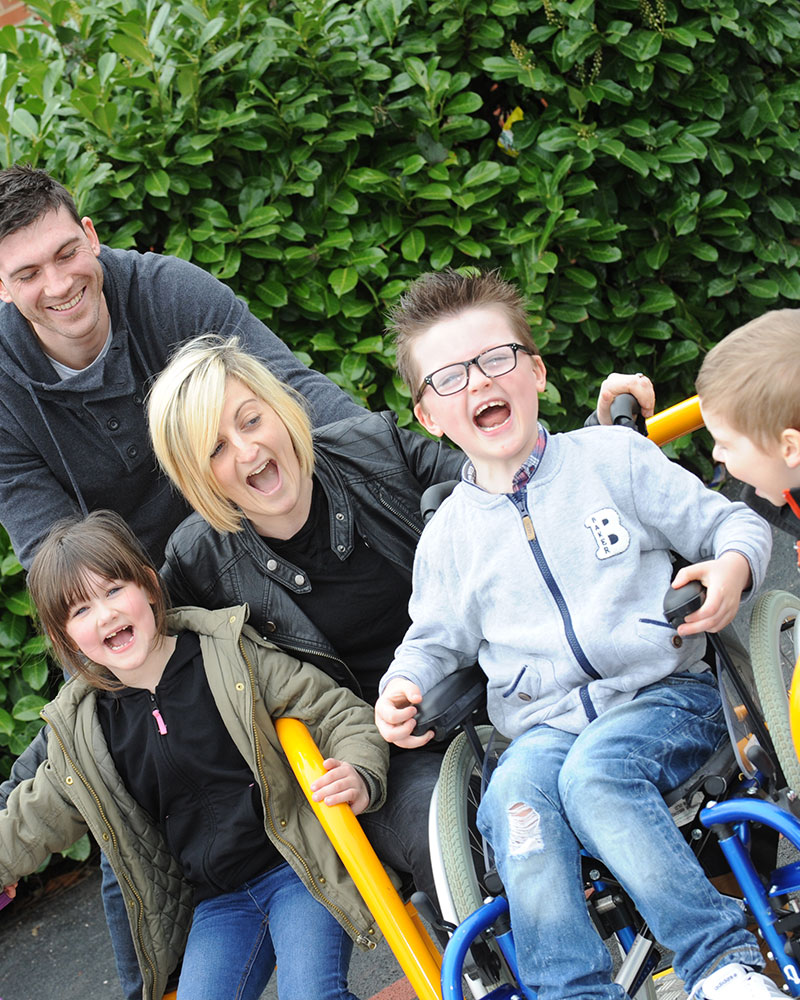
2. Erreichbarkeit
Ein integrativer Spielplatz muss barrierefrei sein und ein einfaches Reisen, Bewegen und Ankommen ermöglichen. Wählen Sie Belagsmaterialien, die den Normen EN 1176 und EN 1177 entsprechen, wobei Spielwert, Verletzungsschutz, Zugänglichkeit und Ästhetik berücksichtigt werden müssen. Die Wege sollten so breit sein, dass Rollstuhlfahrer, Eltern mit Kinderwagen und Kinder, die nicht berührt werden wollen, bequem aneinander vorbeikommen. Sorgen Sie für bündige Übergänge zwischen verschiedenen Oberflächen, damit sich Personen, die Mobilitätshilfen benutzen, frei bewegen können.
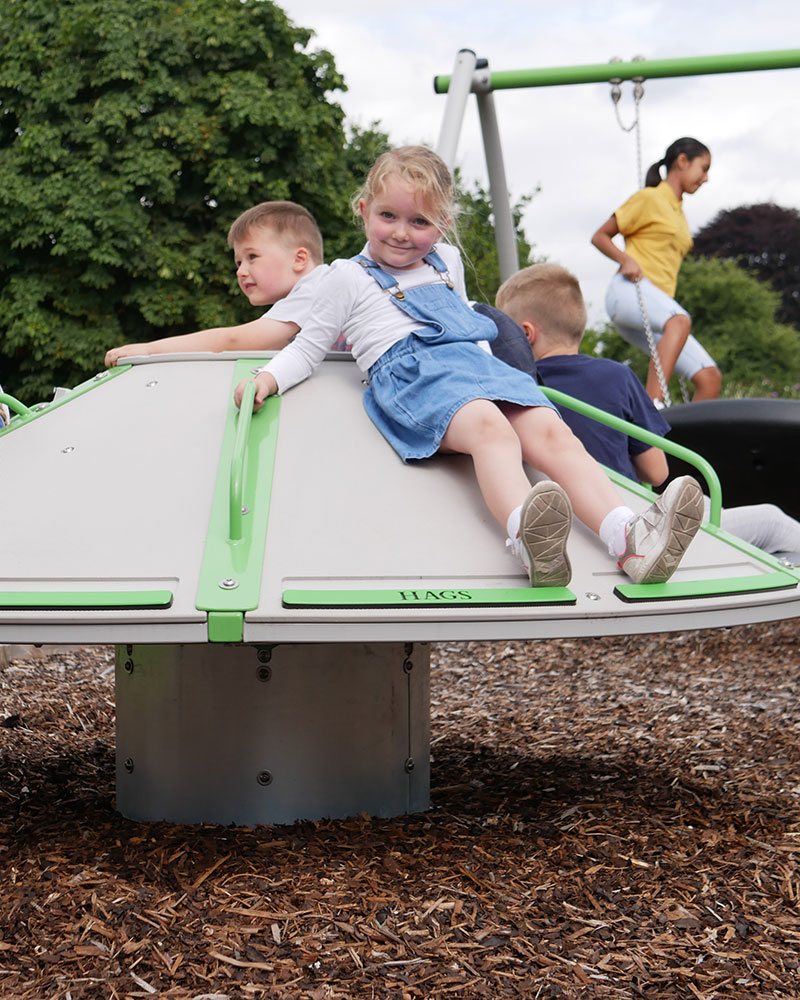
3. Spiel für alle
Gruppieren Sie ähnliche Geräte mit unterschiedlichem Schwierigkeitsgrad, wie z. B. Spinning-Geräte, zusammen, damit Kinder mit unterschiedlichen Fähigkeiten nebeneinander an der gleichen Aktivität teilnehmen können. Spielplätze sollten Kinder aller Altersgruppen und Fähigkeiten ansprechen, indem sie eine Reihe von Geräten mit unterschiedlichen Spielwerten und Herausforderungen anbieten. Auch wenn nicht jedes Kind jedes Gerät benutzen wird, ist es wichtig, dass jedes Kind eine echte Wahlmöglichkeit hat, auf welchem Gerät es spielt.
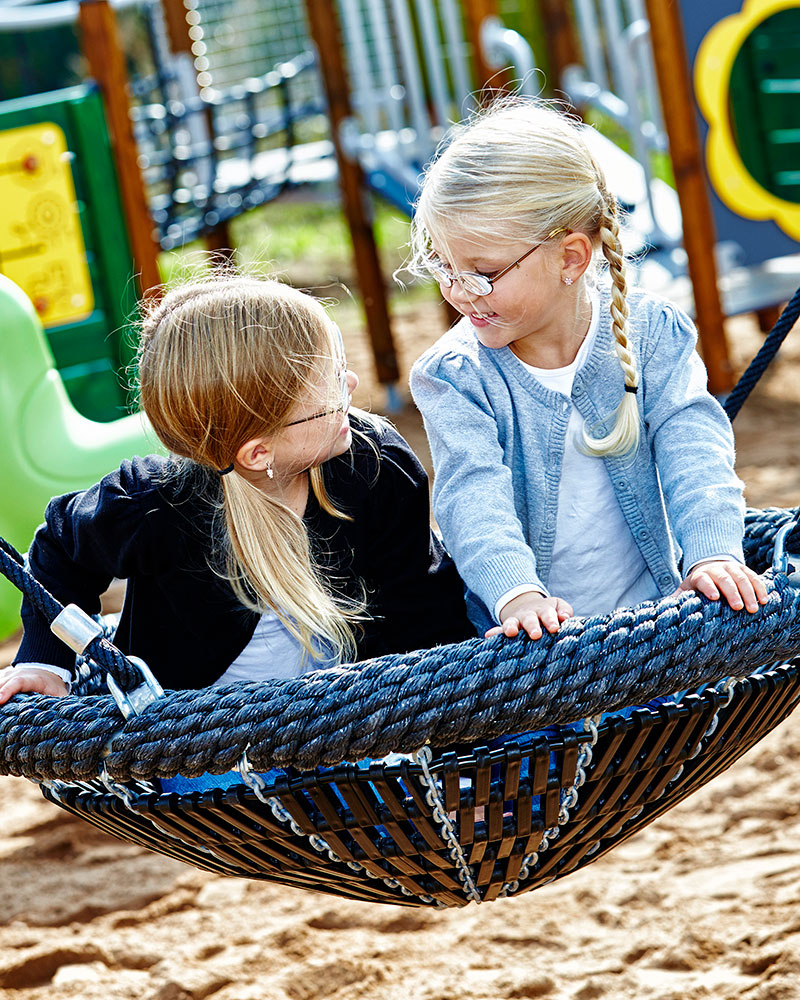
4. Gelegenheit zur Ruhe
Abgeschiedene Bereiche innerhalb des Spielplatzes, die dennoch sichtbar sind, sind ideal für Kinder, die einen ruhigen Ort brauchen, um sich von der Reizüberflutung zurückzuziehen. Beispiele hierfür sind Bereiche unter Spielgeräten, Spielhäusern und anderen geschlossenen Geräten, in denen sich die Kinder sicher fühlen, die aber für die Eltern oder Betreuer sichtbar bleiben. Ein Orientierungspfad ermöglicht es den Kindern, den Spielbereich zu überblicken, bevor sie ihn betreten, und bietet eine sichere Zone mit geringer Aktivität, in der sie das Spiel zu ihren eigenen Bedingungen betreten und verlassen können.
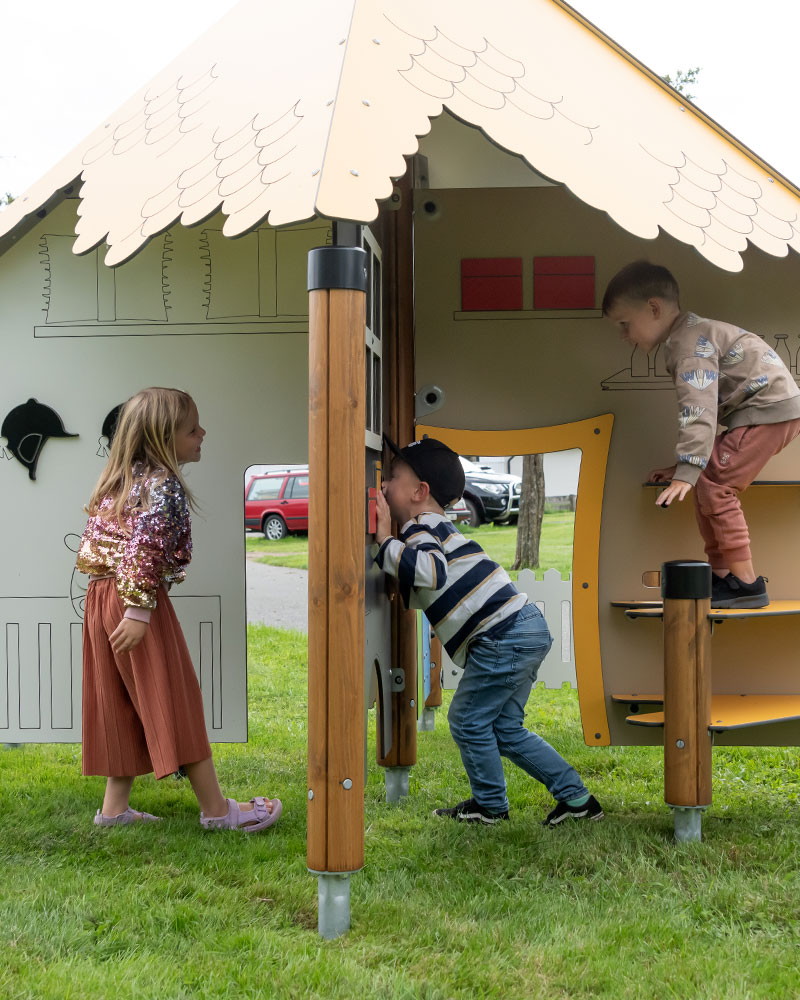
5. Soziales Umfeld
Spielplätze eignen sich hervorragend, um soziale Fähigkeiten zu trainieren. Daher ist es wichtig, dass die Spielgeräte das kooperative Spiel fördern. Beim Solitärspiel erkundet ein Kind allein, daher sollten die Geräte unabhängig voneinander genutzt werden können. Beim Zaungastspiel können Kinder andere beobachten und sich mit ihnen unterhalten, ohne selbst mitzuspielen, was durch gruppierte Spielgeräte erleichtert wird. Beim parallelen Spiel spielen Kinder Seite an Seite mit unterschiedlichen Aktivitäten, z. B. auf Schaukeln. Beim assoziierten Spiel spielen die Kinder unabhängig voneinander und ahmen dabei andere nach, unterhalten sich und wechseln sich ab, wie z. B. in Sand-, Wasser- und Fantasiespielbereichen.
Gestaltung eines integrativen Spielplatzes
Die Gestaltung eines inklusiven Spielraums erfordert eine durchdachte Integration von Spielwerten und Barrierefreiheit. Die folgenden Abschnitte heben Schlüsselelemente hervor, die bei der Gestaltung eines inklusiven Spielraums zu berücksichtigen sind. Dieser Leitfaden ist flexibel und ermöglicht es den Planern, bestimmten Aspekten Priorität einzuräumen und individuelle Strategien zu entwickeln, um die Bedürfnisse der Nutzer bestmöglich zu erfüllen.
Die folgenden Seiten sollen Ihnen bei der Planung und Gestaltung eines integrativen Spielplatzes helfen.

